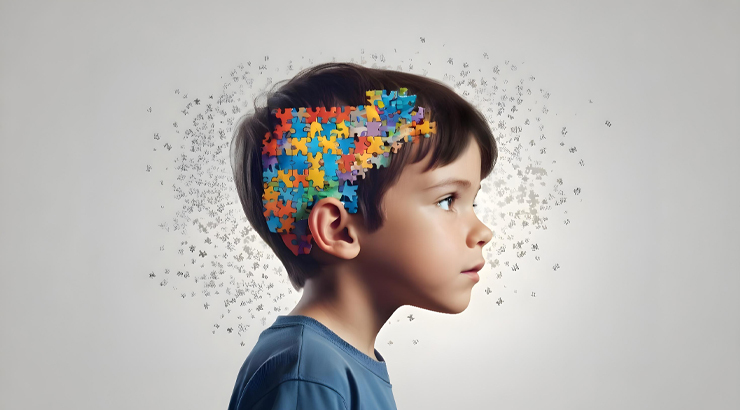Neuroplasticity is the brain’s ability to change, adapt, and form new connections. This ability is present throughout life but is strongest in early childhood. For children with Autism, neuroplasticity is essential for developing new skills, improving cognitive functions, and adapting to different environments.
How Neuroplasticity Works in Autism ?
The brain constantly adapts to experiences. However, in Autism, certain neural pathways may develop at a different pace or in unique ways, leading to challenges in communication, social interaction, and sensory processing. Despite these differences, neuroplasticity allows the brain to rewire itself through learning, therapy, and repeated practice.
Ways to Support Brain Adaptation
- Early Intervention: Structured therapies like speech therapy, occupational therapy, and applied behavior analysis (ABA) can significantly enhance cognitive and social development by strengthening essential neural connections.
- Repetitive Learning: Repetition strengthens pathways in the brain, helping children with Autism improve their skills. Daily practice of skills, such as communication or motor tasks, reinforces learning and helps with long-term retention.
- Sensory Integration Activities: Engaging in activities that stimulate the senses helps the brain process information better. Techniques like deep pressure therapy, textured play, and vestibular exercises can improve sensory regulation.
- Social Engagement: Encouraging interaction with peers and family members strengthens communication pathways. Even small, structured social interactions, such as turn-taking games or storytelling, help in developing social skills.
- Physical Exercise: Activities like swimming, running, or yoga improve brain function and coordination. Exercise also helps regulate emotions, reduce anxiety, and enhance focus, making it a powerful tool for learning.
The Power of Consistency
The key to using neuroplasticity for learning is consistency. A structured and predictable environment helps children feel secure, making it easier to absorb and retain information. Structured routines, visual schedules, and regular practice help children with Autism retain information and build confidence in their abilities. Simple strategies, such as breaking down tasks into smaller steps and using positive reinforcement, further support learning.
By understanding neuroplasticity, parents and caregivers can help children with Autism reach their full potential through targeted therapies and everyday learning experiences. With patience, repetition, and the right support, every child has the ability to grow and adapt in their own
Regards
Dr. Atul Madaan (Autism Specialist)
MAAP, MBA, MPhil (Clin. Psy), PhD (Psy)
Operational Head & Clinical Psychologist- Care For Autism (CFA)
8383849217
www.autismspecialist.co.in
𝐂𝐀𝐑𝐄 𝐅𝐎𝐑 𝐀𝐔𝐓𝐈𝐒𝐌 (CFA)
One-of-a-Kind Assessment & Remedial Training Centres for Special-needs Children.
📌 Ludhiana : 114, Green Field, Kochar Market Road, Near National Lab, 9646443200
📌 Jalandhar : Hoshiarpur Road, Mubarkpur Shekhein Pind, Under Bridge, Near Railway Crossing, 9779725400
#autismdoctorludhiana #autismdoctor #autismdoctorinludhiana #autismspecialist #bestautismdoctor #bestautismdoctorinludhiana #autismbestdoctor #bestautismcenter #bestautismconsultant #autismconsultant #autismludhiana #autismspecialistinludhiana #atulmadaan #dratulmadaan #autismtreatmentludhiana #autismtreatment #careforautism #autismmyths

Leave a Reply